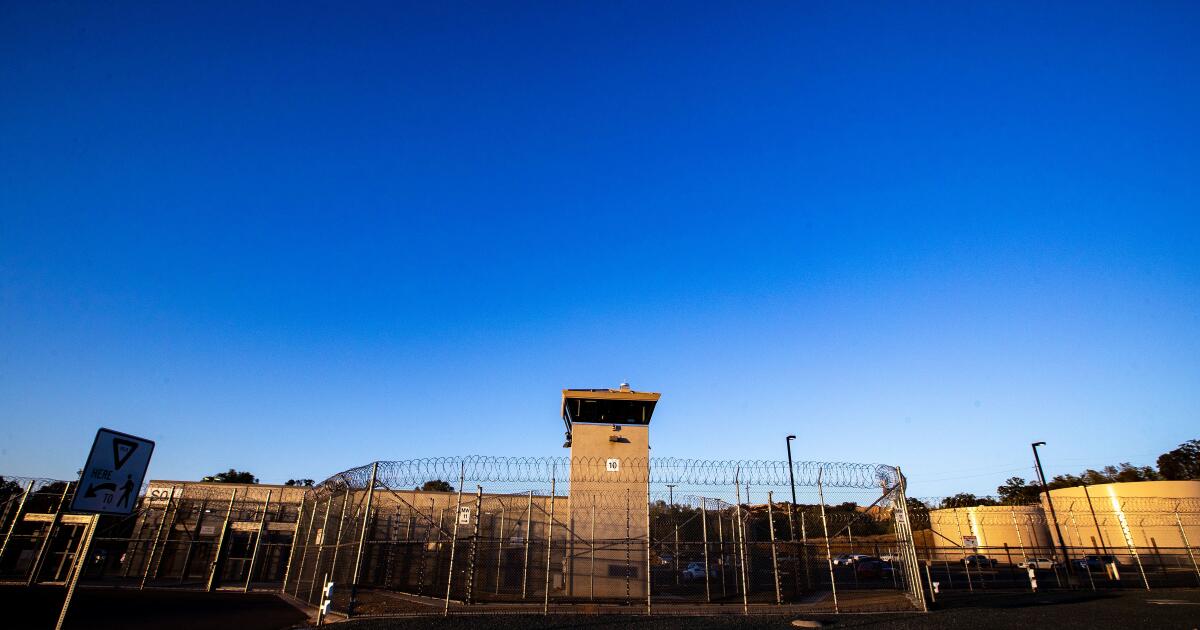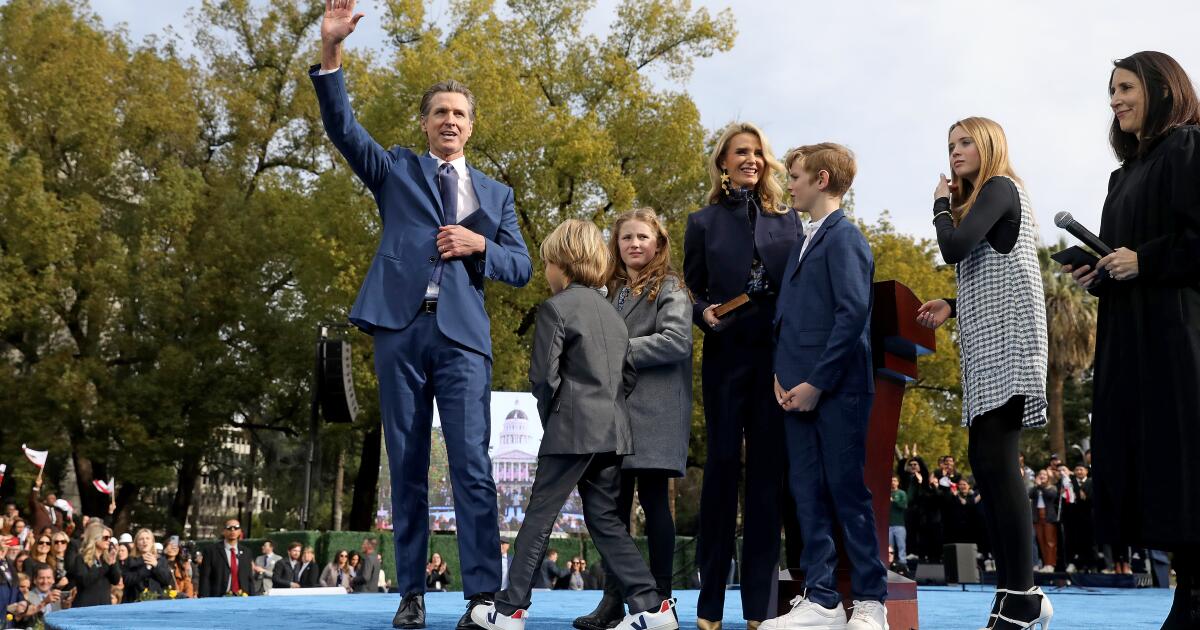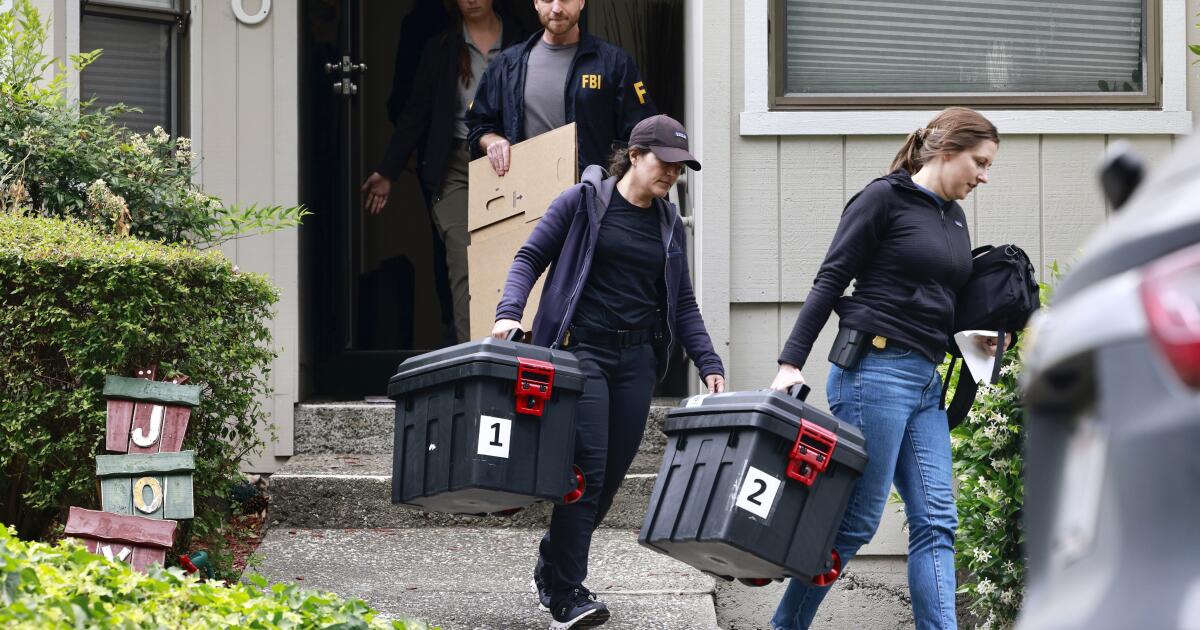World News
Lawmakers add measure to end forced prison labor to ballot


California lawmakers voted to place a constitutional amendment on the November ballot to completely ban involuntary servitude, a change that would remove an exception in cases involving the punishment for a crime.
If passed by voters, the ballot measure would end mandatory work requirements for state prisoners, instead making jobs for those incarcerated voluntary.
“The current practice of forced labor does not prepare incarcerated people for success upon reentry and often prevents rehabilitative services,” said Sen. Steven Bradford (D-Gardena) during Thursday’s floor session. “Let us take this step to restore some dignity and humanity for the often forgotten individuals behind bars.”
The California Constitution mirrors the 13th Amendment of the U.S. Constitution and prohibits slavery and involuntary servitude. However, both allow involuntary servitude as punishment for a crime.
The first push to remove that exception from the state Constitution stalled in 2022 after the state Department of Finance estimated that barring forced labor could cost the state billions of dollars annually if the Department of Corrections and Rehabilitation were forced to pay prisoners the minimum wage.
The proposed constitutional amendment is one of 14 bills introduced by the California Reparations Task Force, which has sought to create proposals and recommendations to address the injustices and inequities sustained by the descendants of African Americans enslaved in the U.S.
“As we do the work of reparations we refer to slavery as a relic of the past,” said Sen. Lola Smallwood Cuevas (D-Los Angeles). “But as I stand here today we have thousands of indentured servants in our penal system.” The measure passed the Senate and Assembly with bipartisan support.
Assemblymember Lori Wilson (D-Suisan City), chair of the Legislative Black Caucus, revived the proposed constitutional amendment last year. Wilson said the effort has nothing to do with changing wages for prisoners. But Wilson expects the issue of minimum wages for prisoners to come up next session.
An earlier version of the proposal would have made prison work optional, but it did not strike language in the Constitution that says “involuntary servitude is prohibited except to punish crime.”
After negotiations, the governor’s office and advocates came together last week and the new version of the proposal would remove the language. Currently, the Department of Corrections is permitted to require able-bodied inmates to work for as little as 35 cents an hour.
Carmen-Nicole Cox, director of government affairs at ACLU California Action, who has been involved in negotiations, said the governor’s “fingerprints” are on the measure. There was no debate on the Senate and Assembly floors during Thursday morning’s votes.
The new proposed amendment, through Assembly Bill 628, a companion bill to the ballot language, would make prison work optional by instituting a voluntary work program. The bill also explicitly says the state would not be required to pay prisoners minimum wage and that the secretary of the Corrections Department would set prison wages. This was an amendment that criminal justice advocates pushed back on in negotiations with the governor’s office.
“We’ve had to make our concessions,” Cox told The Times. She added that, despite those compromises on wages, a triumph for advocates was to include language that forbids disciplinary actions against incarcerated individuals for denying a work assignment. “We will be the first state to amend the constitution and explicitly say you can’t punish people for refusing work.”
If passed it will go into effect Jan. 1, 2025.
World News
India Wins T20 Cricket World Cup, Stamping Its Domination of the Sport

India won the men’s Cricket World Cup on Saturday, defeating South Africa to end a dry spell in tournament victories that had lasted over a decade, even as the nation was dominating the sport globally in other measures like talent, cash and influence.
The tournament was played across several Caribbean islands, with a few of the matches hosted in the United States, including at a pop-up stadium in New York. When the final, in Barbados, ended with India declared the champion, it was close to midnight back home, where joyful crowds poured into the streets across several cities.
“Maybe in a couple hours it will sink in, but it is a great feeling,” said Rohit Sharma, India’s captain, who took a tour of the stadium with his daughter propped on his shoulders to thank the crowd. “To cross the line — it feels great for everyone.”
It was a closely fought match, and a deeply emotional one for India, in part because many of its senior players, including Sharma, 37, were near the end of their careers. India last won the World Cup in T20, the shortest format of cricket, in 2007, when Sharma was just getting started. The top prize had also evaded Virat Kohli, 35, one of cricket’s most recognized icons. Rahul Dravid, India’s coach, had never won a World Cup during his long and illustrious career as a player.
All three men ended the night on a happy note, with Sharma and Kohli announcing their retirement from the fast-paced short form of the game. Dravid, who finished his stint as India’s coach, is normally a quiet, stoic presence. But after the win, he was screaming and celebrating.
India’s president, Droupadi Murmu, and prime minister, Narendra Modi, both congratulated the team. “In the field, you won the World Cup. But in India’s villages, streets, and communities, you won the hearts of our compatriots,” Mr. Modi said in a video message.
Cricket, followed by hundreds of millions of people, is a crucial part of India’s global brand — perhaps even more important than the country’s film industry. The governing body of cricket in India has at times been accused of using its outsize economic heft to dictate terms around global cricket events, reflecting its status as the richest contributor and a destination for the world’s best players.
The start of the Indian Premier League in 2007 transformed a sport that was once seen as slow and short of cash. In just 17 years, the league’s brand value has surpassed $10 billion, making it among the richest sports leagues in the world. Players routinely earn contracts worth over $1 million for a season that lasts about eight weeks, with some of the highest-paid bagging close to $3 million.
Last year, India launched the I.P.L.’s sister league, the Women’s Premier League, with $500 million — an investment similar to the one that started the men’s league — and is already expanding opportunity for women in India and for talent from around the world. The league’s wealth has meant more investment at the grass roots to develop more players. Female players long in the shadow of the men’s game are now finding brand endorsements, more TV viewers and thousands showing up for their matches at stadiums.
And the foreign players in both the leagues — all with large followings at home — are a public relations boost for India as they travel around to play, using social media to post admiration for the culture of a vastly diverse country.
In India, a cricket-crazy nation that closely follows the players’ every move on and off the field, many of this generation of stars have been role models that could help the country move the needle on social issues, particularly about a public life that remains male-dominated.
Sharma, the captain, who is married to a sports management professional, and Kohli, who is married to an actor, often speak of the role of their partners in their careers. Sharma’s wife, Ritika Sajdeh, and their daughter are often at his side during tours, while Kohli is frequently seen video-calling his family from the stadium after matches.
“Our daughter’s biggest concern was if all the players had someone to hug them after she saw them crying on TV,” Anushka Sharma, Kohli’s wife, posted on social media after the win.
Jasprit Bumrah, who was named the World Cup’s most valuable player, found himself doing his post-award interview with his wife, the broadcaster Sanjana Ganesan. This was a working couple on tour. Behind them amid the celebrations was their 10-month-old baby being looked after in a stroller.
“Thank you so much for talking to us, Jasprit, and all the best for—” Ms. Ganesan began as she wrapped up the interview. But her husband went in for a hug before she finished speaking and then ran back to join his teammates in celebrating.
World News
Euro 2024: Spain v Georgia – Nico Williams’ remarkable journey to the top

Despite their new found security, life was far from easy for the Williams family. They moved 150 kilometres south east to Pamplona.
Nicholas Williams Arthuer was born there on July 12, 2002, but unable to find enough work to keep his family, Felix moved to London doing whatever he could to send money home.
He cleared tables in a food hall in a Chelsea shopping centre and worked as a security guard, even on the turnstiles at Chelsea FC.
He was away for 10 years – he is back in Bilbao now – during which time Inaki became like a father to Nico, while their mother worked up to three jobs at a time in her efforts to provide for her family.
When they go for lunch at their mum’s, she reminds them to clear the table, wash the dishes, and tells them off if they step out of line. The education from their parents is constant.
Inaki, who decided to play for Ghana as a homage to them, would watch over Nico all the way.
From picking him up from school and giving him a ‘bocadillo’ (sandwich) when they come out of class, to later instructing him in the behaviour that he needed to follow if he wanted to make it as an elite athlete.
“For me he is a reference, he is everything for me,” said Nico. “He has helped my parents and me so that we can eat, so that I could go to class, so that I could get dressed.
“He corrects me, he advises me, he has always done it actually, but we get along very well. He is my brother, but he also acts as a father a little.”
On 28 April 2021, the brothers were brought on as second-half substitutes in Athletic’s 2-2 draw at home against Real Valladolid to become the first siblings to play for the club together since 1986.
After the final, they immediately went to visit their mum, who was unable to watch the match as fans were banned from the stadium because of the Covid pandemic.
World News
Ventura Pier reopens after a year-and-a-half closure caused by storm damage


Ventura’s famous pier reopened Saturday after massive waves damaged the landmark last year.
Social media posts and news video footage showed people striding onto the pier early Saturday, carrying fishing poles, coolers and folding chairs. The pier — the oldest in California — is a popular fishing and sight-seeing spot and draws tourists, families and lovebirds.
“The Ventura Pier is open!” the city of Ventura announced on its X feed.
High surf from a winter storm pummeled the boardwalk in January 2023. In December, another storm swept through, causing more damage to the pier’s piles and braces.
Mary Joyce Ivers, deputy public works director in Ventura, told KTLA that the city had to replace 37 timber piles, which hold up the deck of the pier, as well as 100 pieces of hardware and cross-bracing and 3,000 square feet of deck board.
“It’s such an important piece of our city,” Ivers told KTLA. “It’s such a great landmark and so many great things happen on this pier for families and our community.”
The repairs cost at least $3.3 million, with the federal government and the state expected to pick up the tab, according to a city news release.
The pier, first built in 1872 as a private commercial wharf, has been repaired or rebuilt countless times throughout its history. It closed in 1992 for 13 months after it was clobbered by waves and reopened after a $3.5-million restoration.
More recently, it closed in 2015 for several months for repairs after another storm.
Ventura purchased the pier for $7,000 in 1940 but gave it to the state in 1949.
In 1990, the city moved to take it back after state officials said they were considering demolishing the structure because of the high maintenance costs.
-

 African History5 years ago
African History5 years agoA Closer Look: Afro-Mexicans 🇲🇽
-

 African History5 months ago
African History5 months agoBlack History Facts I had to Learn on My Own pt.6 📜
-

 African History5 years ago
African History5 years agoA Closer Look: Afro-Mexicans 🇲🇽
-

 African History1 year ago
African History1 year agoMajor African Tribes taken away during the Atlantic Slave Trade🌍 #slavetrade #africanamericanhistory
-

 African History1 year ago
African History1 year agoPROOF AFRICAN AMERICANS AIN'T FROM AFRICA DOCUMENTED EVIDENCE
-

 African History1 year ago
African History1 year agoCameroon 🇨🇲 World Cup History (1962-2022) #football #realmadrid #shorts
-

 African History5 months ago
African History5 months agoBlack History Inventors: Mary Kenner 🩸
-

 African History4 months ago
African History4 months agoMr Incredible Becoming Canny/Uncanny Mapping (You live in Paraguay 🇵🇾)































